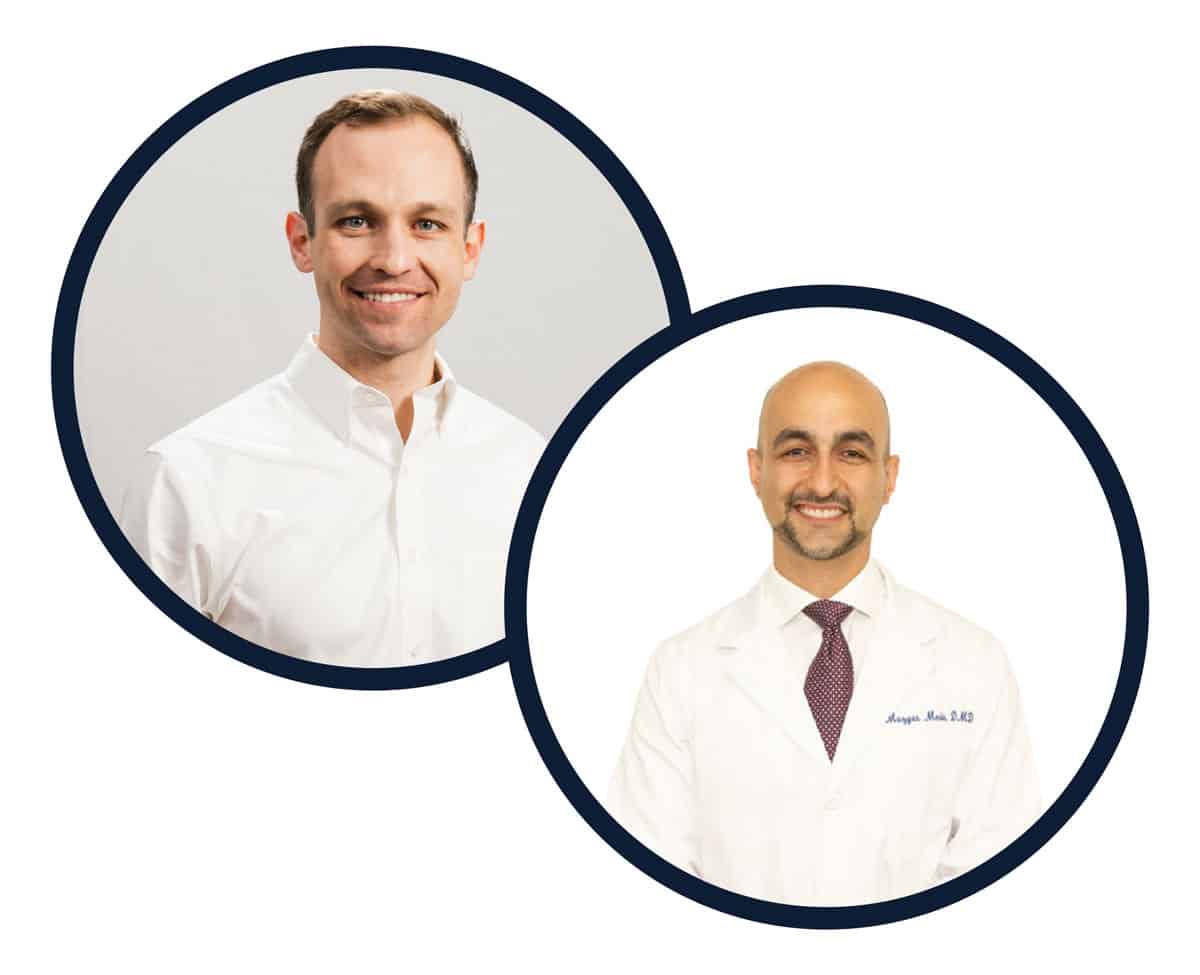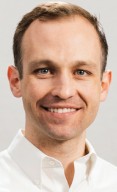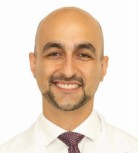Drs. Alfred Griffin and Maz Moshiri share their views on LightForce technologies — aligners and customized, 3D-printed tooth-moving tools.
 Two orthodontic trailblazers discuss how LightForce and digital appliances are transforming orthodontics
Two orthodontic trailblazers discuss how LightForce and digital appliances are transforming orthodontics
Drs. Alfred Griffin and Maz Moshiri share their views on aligners and the customized, 3D-printed tooth-moving tools provided by LightForce.
Dr. Alfred Griffin (AG): Maz, you are easily one of the foremost authorities in the aligner world. I’ve been in the audience for your lectures for over half a decade now. I’ve been looking forward to this conversation.
Dr. Maz Moshiri (MM): Thanks, Alfred. I’ve been equally as impressed with your vision to improve our profession. Your foresight has been incredible with regards to customizing braces within the digital workflow. My experience with the system has been amazing so far.

Beyond aligners
AG: As someone steeped in the aligner world, where does LightForce fit into your practice?
MM: I was waiting for brackets with a truly digital workflow to mirror my aligner workflow. Consistency in our practice is very important to me. I feel like it makes me a much better orthodontist to see the treatment plan on a screen. I can really visualize things much better when they’re magnified. Combine the digital workflow with the unmatched level of customization, and it was a no-brainer.
Finding your practice’s Zen
AG: Talk about your journey to finding balance in your practice as it relates to business and clinical efficiencies.
MM: First, as a practice owner, I’m constantly thinking about monitoring those things. Looking back, our practice was getting busier, and we needed to take some of the load off of our lab because it was labor intensive to do indirect bonding with our lab technician. Second, not surprisingly, I didn’t like carrying stock bracket inventory. To be honest with you, when 3M™ stopped supporting SmartClip™, I could not receive some of my variable torque brackets.
Thankfully, the switch was a seamless and enjoyable transition. LightForce plugged right into our workflow without increasing duress or time spent within the practice.
An end-to-end digital practice
AG: Most of us have a digital and an analog workflow depending on the tool we’re using for that patient. In your hands, what is the best workflow for your patients/outcomes?
MM: I feel like I’m actually a better orthodontist digitally. It makes me see things in 3D spatial relation better. LightPlan, LightForce’s Treatment Software, gives me a simulation of how the teeth are moving. I can start anticipating anchorage needs, visualize how teeth are predicted to fit together, and overall see the beginning with the end in mind. Being able to see the finish, along with the ability to anticipate things happening along the way, provides me with the main advantages of digital treatment planning.
Furthermore, a nice advantage with LightPlan is that it is generally accepted faster than clear aligner plans with regards to doctor time. We scan a patient in, confirm with our TC that this is a LightForce patient, and then seamlessly transition into a LightPlan. Within no time at all, I’m able to make any changes I need. The simplicity is fantastic.
It’s not as nuanced as it would be in terms of having an Invisalign technician because I’m not worried about AI and/or what attachments I’m getting, among other things. We know every tooth has a handle on it, which decreases the need to anticipate push surfaces for movement or anchorage.
It’s just braces
AG: Great point — for a new fixed appliance system to add value to a practice, it should reduce your time spent as much as possible — the nice thing about LightPlan and braces is that we’re able to leverage their biomechanical efficacy to minimize doctor-company cycles. This obviously impacts lead time, a doctor’s time, and ultimately patient scheduling.
So now that you’ve experienced digital brackets and aligners, are there any major deviations in your practice or lab workflow?
MM: It’s been great. The doctor’s time spent detailing brackets on the model for traditional indirect bonding is now translated into digitally placing the brackets in the digital realm, which has the added advantage of substantial diagnostic tools to further aid in treatment planning. Of course, the decreased strain on our in house lab has been a significant added bonus. This has seamlessly integrated into our digital workflow, which we were so accustomed to due to the high level of Invisalign that we have historically provided.
Bonding with indirect bonding
AG: One of the reasons why we placed so much emphasis on the indirect bonding process is because we believe it’s the linchpin in any custom system. How do custom brackets change the indirect bonding experience?
MM: We’re all striving to have the right bracket in the right spot. For example, it defeats the whole force system if you don’t have the aligner attachment in the right spot.
I’ve been amazed by LightTrays, LightForce’s 3D printed jigs. In my opinion, they are printed beautifully. I think “foolproof” might be a strong word because it indicates it’s at 100%, but with the combination of custom bases and this IDB tray, it’s near spot-on like a lock in key. You’re getting that bracket in the right spot every time, whether that’s on FA point or not.
United systems unite teams
AG: At LightForce, we think a lot about the whole system — not only the brackets, but also the software, the IDB tray, and bite turbos. Everything should work better if it’s all designed to meet a common clinical goal.
MM: Agreed! We see that with the indirect bonded turbos. Before LightForce, I was personally having to reposition the lower brackets quite a bit to open up the bite more to accommodate deep bite correction during leveling in order to adjust for the thickness of the bracket. Having custom-designed turbos for a given IDB setup minimizes so many of these workflow issues. We routinely use them to disclude posterior teeth and add elastics to open deep bites with LightForce.
The Sarver school of esthetics
AG: A mentor I know we both share is Dr. David M. Sarver. He was probably ahead of his time in addressing the importance of esthetics when the orthodontic world was obsessed with occlusion. How important is the face and smile arc in your setups?
MM: It’s everything. My traditional approach to treatment planning is to plan the custom the torque prescription based on our cephalometric analysis to address any compensations or decompensations I’m aiming to provide for any given patient. Then, when I pull up the patient’s smile photo, I’m carefully looking at the upper incisors. I’m looking at the position relative to the lip, and that’s affecting my whole setup in terms of bonding. That dictates how the lower incisors are going to go because I have to make room for what just happened on the upper. Dr. Sarver taught me that. I was a big Sarver supporter starting back in residency, reading everything he put out there. It was all ahead of its time, but very relevant.
Face mapping the future
MM: Regarding esthetics, it’s been fascinating being a beta tester of the Face Map technology, the new software feature from LightForce. I’ve enjoyed collaborating with LightForce engineers, designers, and product managers.
AG: Thanks, it’s the accumulation of a lot of discussions with LightForce users like you, Drs. Sarver, Waldman, Wheeler, Nobrega, and Shuman, my dad, and so many others. I believe firmly that our close partnership with our user community, orthodontists, is part of our secret sauce as a company.
We’re all taught that a key component of smile arc depends on the upper incisor’s vertical position and torque, which are both tough to achieve at the same time with existing appliances. Fully custom braces enable such movements predictably and in concert. Now with Face Map, you get a better diagnostic tool to even further improve smile arc plans and outcomes.
For those readers that don’t know, Face Map allows orthodontists to use their phone or tablet to scan a 3D model of their patient’s face, which gets stitched to their intraoral scan, and then the doctor can use that extra diagnostic information to treatment plan for the most precise esthetic outcome from all facial angles without a crazy expensive 3D-photometry machine.
MM: One of the biggest things I’ve been excited about is actually seeing how different my setup is with Face Map. I thought I was setting everyone up for smile arc properly; however, the difference has been eye-opening. Without Face Map, I’m just doing my best by looking at the patient’s smile photographs and comparing them to the floating model. That was the way it was done.
But now with Face Map, it’s awesome. It’s just so different, in terms of seeing how much more I’m actually extruding the upper teeth to get them to touch the lower lip, which affects my bracket position. It also affects what’s happening on the bottom arch. That’s what we want. We want to give patients the eye-popping smile that they came to us for.
I’ve also been amazed at how popular this 3D-scanning feature has been with patients. The act of scanning their face and explaining how it will improve their treatment really resonates and helps differentiate our practice. When we show patients their actual face on a LightPlan, it becomes very clear these braces and our treatment plan are only for them.
Map your face
MM: Alfred, I’m sure a lot of people would love to see Face Map in action. I know you’re currently in beta testing, but is there a way any orthodontist reading this can see it for themselves?
AG: We are in beta testing right now with a select group of LightForce providers; however, our team does have a short demo of the technology, which you can access at www.lightforceortho.com/facemap
AG: Maz, thanks for taking the time to speak with me and for being an essential part of LightForce’s growth and development.
MM: Thank you, Dr. Griffin, for the work you and your team are doing to push the specialty forward. It’s been nice to work with a company that really listens to orthodontists and has the prowess to make enhancements. I’m excited about where LightForce is going.
This information was provided by LightForce Orthodontics.
To see a CE webinar about LightForce Orthodontics Presented by Dr. Alexander Waldman, click here: https://orthopracticeus.com/thank-you/webinar-adapting-to-the-lightforce-system/. Subscribers can take the quiz and get 2 CE credits!
Stay Relevant With Orthodontic Practice US
Join our email list for CE courses and webinars, articles and mores

 Alfred C. Griffin III, DMD, PhD, MMSc, is the cofounder and CEO of LightForce Orthodontics, a digital platform providing orthodontists with fully customized, 3D-printed tooth-movement tools. Dr. Griffin received his BS in Biochemistry from the University of Virginia and completed his DMD and PhD in Craniofacial Biology at the Medical University of South Carolina in 2014. He earned his Masters of Medical Research and Certificate in Orthodontics from the Harvard School of Dental Medicine in 2017. In addition to leading LightForce, Dr. Griffin practices in the Boston area and teaches at Harvard School of Dental Medicine. Dr. Griffin, along with Lou Shuman, DMD, founded LightForce Orthodontics in 2015 with the mission to revolutionize the specialty through advanced manufacturing and technology. After 4 years of extensive research and development, LightForce launched its first product to the orthodontic market — the world’s first and only fully customized 3D-printed bracket system and digital treatment software. Learn more at
Alfred C. Griffin III, DMD, PhD, MMSc, is the cofounder and CEO of LightForce Orthodontics, a digital platform providing orthodontists with fully customized, 3D-printed tooth-movement tools. Dr. Griffin received his BS in Biochemistry from the University of Virginia and completed his DMD and PhD in Craniofacial Biology at the Medical University of South Carolina in 2014. He earned his Masters of Medical Research and Certificate in Orthodontics from the Harvard School of Dental Medicine in 2017. In addition to leading LightForce, Dr. Griffin practices in the Boston area and teaches at Harvard School of Dental Medicine. Dr. Griffin, along with Lou Shuman, DMD, founded LightForce Orthodontics in 2015 with the mission to revolutionize the specialty through advanced manufacturing and technology. After 4 years of extensive research and development, LightForce launched its first product to the orthodontic market — the world’s first and only fully customized 3D-printed bracket system and digital treatment software. Learn more at  Maz Moshiri, DMD, MS, FICD, maintains his private practice in St. Louis, Missouri, alongside his father and sister. In addition to leading multiple Ask the Expert webinars, Dr. Moshiri was a lead educator for Class II Kit solutions for Invisalign and the Deep Bite Solutions of Invisalign G5. He is an Assistant Clinical Professor at the Saint Louis University Center for Advanced Dental Education, where he teaches with a clinical focus on the use of Invisalign. Dr. Moshiri is a Diplomate of the American Board of Orthodontics and Fellow in the American and International College of Dentists. He is the founder of the Aligner Intensive Fellowship, a 17-week online course that teaches orthodontists how to properly treatment plan with aligners.
Maz Moshiri, DMD, MS, FICD, maintains his private practice in St. Louis, Missouri, alongside his father and sister. In addition to leading multiple Ask the Expert webinars, Dr. Moshiri was a lead educator for Class II Kit solutions for Invisalign and the Deep Bite Solutions of Invisalign G5. He is an Assistant Clinical Professor at the Saint Louis University Center for Advanced Dental Education, where he teaches with a clinical focus on the use of Invisalign. Dr. Moshiri is a Diplomate of the American Board of Orthodontics and Fellow in the American and International College of Dentists. He is the founder of the Aligner Intensive Fellowship, a 17-week online course that teaches orthodontists how to properly treatment plan with aligners.
